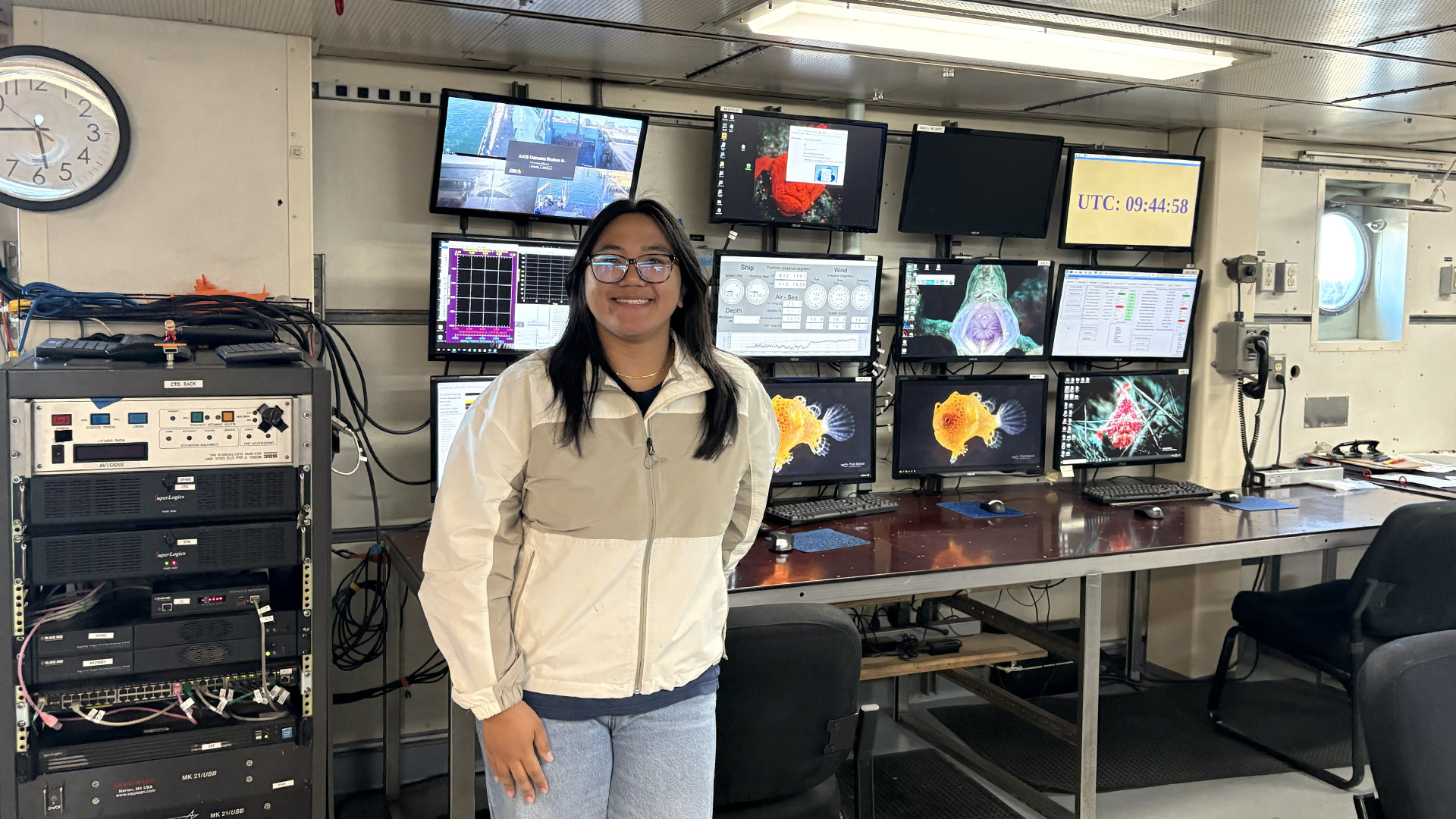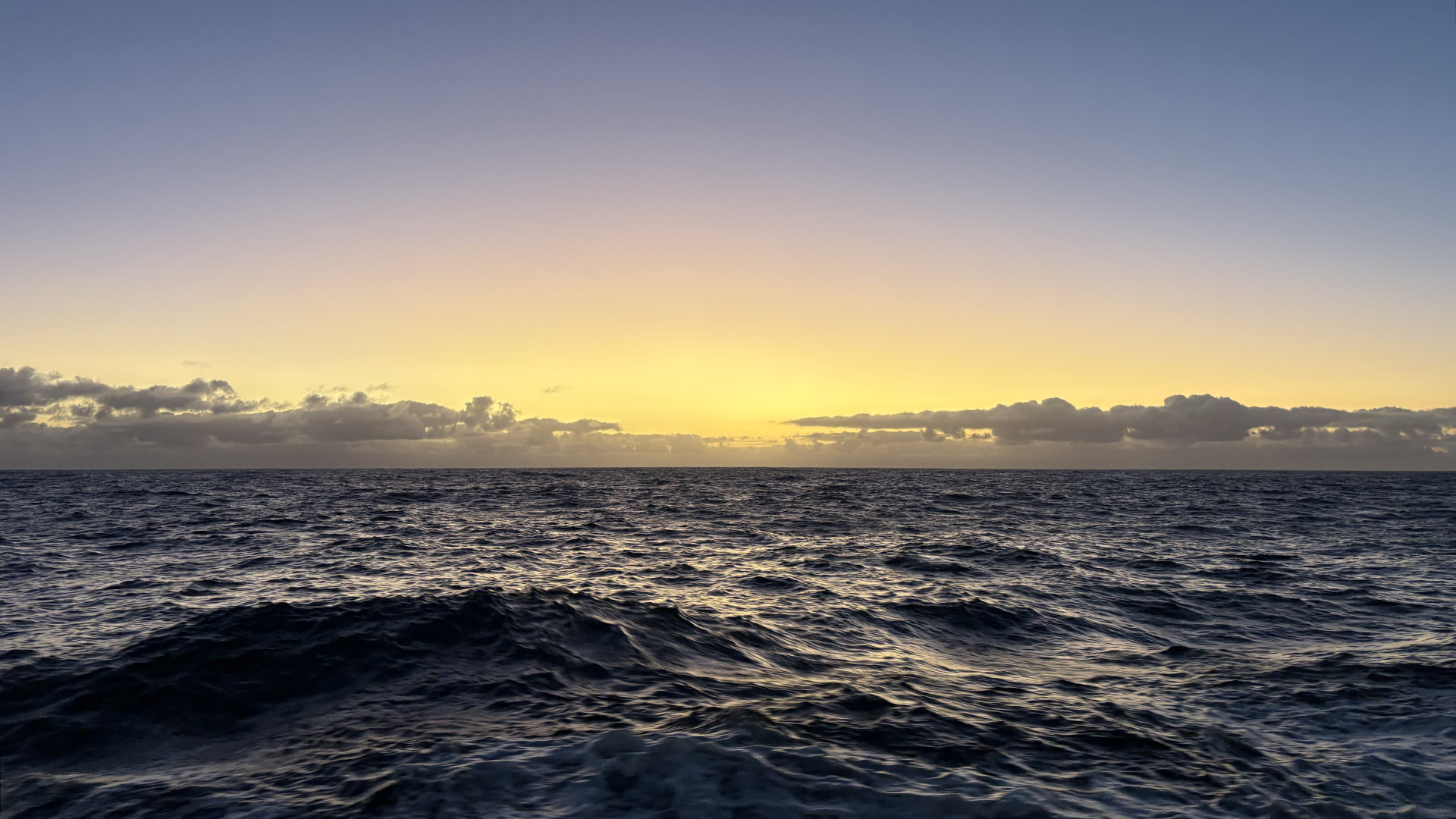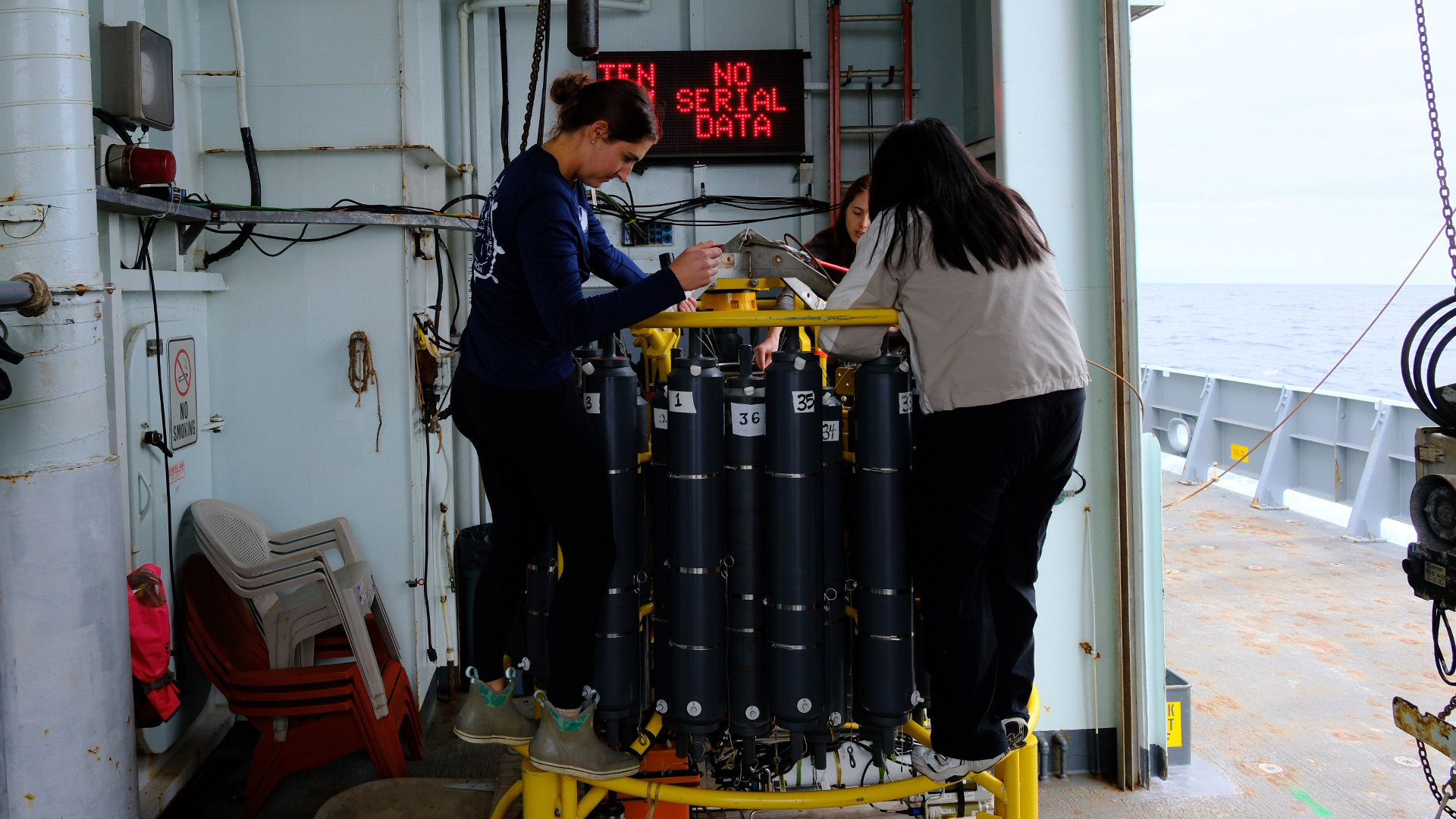A first-timer's first week at sea
Roxanne Mina reflects on Week 1 of her first research cruise experience.
I’m fortunate enough to join the I09N hydrographic cruise as a CTD (conductivity, temperature, depth) Watchstander to assist the science team with CTD computer operation and water sampling for 107 sampling stations in the Indian Ocean. Now, we are finishing up our first week of sailing, slowly making our way towards Phuket, Thailand!
Life on a ship is a learning curve. As prepared as I thought I would be, sometimes it takes being in the middle of the ocean to truly get a grasp of the unique environment you’re in. Some people have better luck than others, but a good portion of us (especially those who are new at sea) are taking sea-sickness medicine to get comfortable with the constant sway of the ship. It can also be disorienting with understanding the ships layout. During my first few days, I would walk in circles, use the wrong stairway, and find myself in front of a different door than what I had planned for. Thankfully, I’ve gotten the hang of it. It’s been interesting to realize that your room is just a staircase away from where you work.
Our arrival at our practice station led to unexpected issues with the CTD rosette system being unresponsive to the software that triggers the Niskin bottles for water sample collection. Fortunately, our experienced members were able to troubleshoot and identify the issue, making our first official station go more smoothly. We are now on a regular schedule of completing 2-4 stations every day. While there is constant work to be done, it’s exciting to know that by monitoring the CTD computer system, preparing the rosette, and taking water samples, I’m actively contributing to the marine science field.
My first week on I09N has been a positive experience thus far. The main charm of working on an oceanographic cruise is being surrounded by people with the same interests. When my shift is over, I catch up with those who are ready to take over for the day shift. While the level of experience greatly varies person to person, it’s nice to know that we all have the same goal of conducting good science. I look forward to seeing how the next 30 days go!
~Roxanne Mina
About the Author—Roxanne Mina is a recent graduate from California State University Maritime Academy and an incoming master’s student at University of South Florida.



